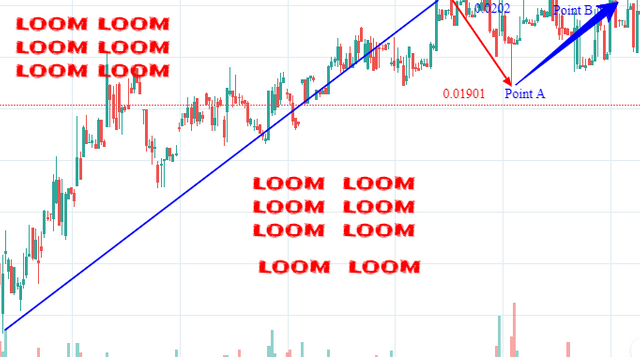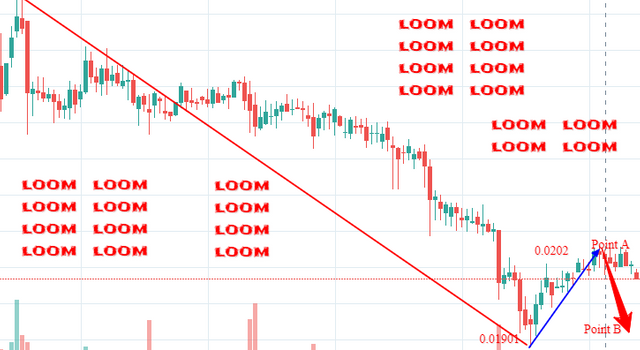Loom coin is a native coin of the loom network. As a loom network coin,loom coin can be transferred from one user to another without involvement of a third party .The transaction will reach the second peer upon being verified by nodes running the loom network.Because of this,loom coin is considered as a decentralized asset.At loom network,different developers can develop their Dapps over there as well as they can create and issue their tokens over there using the loom coin.The Dapps will be charged with loom coin for operating over the loom network while to send the tokens of the Dapps from one smart contract address to another,a certain amount of Loom will be charged as a transaction fees.With Loom coin,different users can use them to vote to any of the verified validators. The validators will use the vote to secure the loom network and to validate any transaction taking place on the loom network.Loom coin has a maximum supply of 1 billion coins. During its ICO in early 2018, one loom coin was going for $0.076. In a very short period of time,the price went as high as $0.77. The price went down again to $0.055 while 2019 was starting. Currently, 1 loom coin is trading at a $0.022. The increase in the price of loom coin from $0.076 to $0.77 was caused by the delegated proof of stake consensus used by the loom coin. Many delegators had delegated most of their coins to several delegates so that they can be used to secure the network and to verify any transaction taking place on the loom network thus making the loom coin to become inefficience in its network thus its demand increases thus causing its price to increase. The way in which delegated proof of stake consensus affects the price movement of the loom coin can further be explained as from below;
Delegated proof of stake consensus
In a delegated proof of stake consensus, delegates and delegators are the key players. Delegates voting power to run the network will be determined by the votes they receive from different delegators.The top delegates with highest number of votes are the one who will be selected to run the network. When more delegators delegate their votes to different top selected delegates,the loom coin will become inefficiency in its network thus resulting to an increase in its price while if few delegators delegate less of their votes to different delegates,then the loom coin will be in surplus in its network thus causing its price to decline. Here are some of the top delegates who are affecting the price of loom coin
a.Huobi wallet
b.cobo wallet
c. stake.withus
d.loom validator
e.plasma-5
f.multichain ventures
g.stake capital
h.stake.fish
The above delegates are the one affecting the future price movement of the loom coin. When more coins are being staked in any of these staking validators, they become inefficiency thus making it become stable. The future price based on the delegated proof of stake can further be explained based on bullish and bearish market condition as follows;
1. Loom bullish condition based on consensus used
Loom coin uses the delegated proof of stake consensus. In the delegated proof of stake consensus, the delegators use their loom coins to vote for delegates to use them to secure the network as well as to validate any transaction taking place on the loom network then in return they receive reward in form of fees charged as well as new coin minted. Many delegators have been seen using their coins to vote to different loom network delegates so that they use those coins to secure the loom network and to verify any transaction taking place on the loom network. Because of this, the loom coin is becoming inefficiency in its network since most of it is being locked for reward in several staking delegates wallets .Because of this,its demand increases thus causing its price to increase. As more delegators will continue to delegate their coins to several delegates to use them to secure the network,the inefficiency of the loom coin will increase much further thus causing its demand to increase much further. This will result to a further increase in its price. This is indicated as from the candlesticks chart below.

From the price analysis of the loom coin above,there are two points ,point A and point B. Before point A, the loom coin can be seen to have gone as high as $0.0202. This increase in price has been due to an increase in the number of delegators delegating their loom coins to several delegates thus causing the loom network to become inefficiency of loom coin. Because of this, its demand increases thus causing its price to also increase. Some delegators who were staking their coin to several delegates wallet then unlock them together with the reward and sell them in the available exchanges thus causing the price to decline to point A at a price of $0.01901. More delegators then join the staking program by purchasing some loom coin in several exchanges after which they take them to lock them to several top delegates.Because of this, the loom coin becomes inefficiency again in its network thus creating its demand again thus causing the price to rise again to point B. In the near future, if more delegators will continue to join the staking program because of an increase in the reward,then the loom coin will further become inefficiency in its network thus creating much more demand. If those coins can be locked for a period of one year,then there is possibility of the price to go as high as $0.04. As an investor,this is the right time to buy since the reward of loom coin is high in staking which can lure many people to lock their coin in several delegates.
2. Loom bearish condition based on consensus used
Loom coin uses the delegated proof of stake consensus. In the delegated proof of stake consensus, the delegators use their loom coins to vote for delegates to use them to secure the network as well as to validate any transaction taking place on the loom network then in return they receive reward in form of fees charged as well as new coin minted. Many delegators have been seen using their coins to vote to different loom network delegates so that they use those coins to secure the loom network and to verify any transaction taking place on the loom network. Because of this, the loom coin is becoming inefficiency in its network since most of it is being locked for reward in several staking delegates wallets .Because of this,its demand increases thus causing its price to increase. If the reward in the near future decline due to Dapps leaving the network because of high fees charged more delegators will unlock their coin from several delegates and start dumping them in several exchanges thus causing its surplus in the loom network to increase . This will cause its price to decline. This is indicated as from the candlesticks chart below.

From the price analysis of the loom coin above,there are two points ,point A and point B. Before point A, the loom coin can be seen to have gone as low as $0.01901. This decline in price has been due to a decrease in the number of delegators who were delegating their loom coins to several delegates thus causing the loom network to become in surplus of loom coin. Because of this, its supply increases thus causing its price to also decrease. New delegators enter the loom staking business where they purchase the loom coin in several exchanges thus creating a demand for it again thus causing its price to rise to point A at $0.0202. Loom network increases its transaction cost thus causing many Dapps to exit the loom network and look for other network to develop on thus resulting to a decline in the staking reward program.Because of this,more delegators then unlock their loom coin in several exchanges together with their reward thus creating a surplus of loom coin again in its network.Because of this,the price falls down again to point B. In one years to come,if many delegators will have exit the loom staking program because of very low reward,then loom coin will not have anyone to hold it thus many its surplus to become in excess in its network.The price might end up falling further to below point B thus in one year time it might go as low as $0.016.As an investor,if you feel staking reward will reduce because of high fees charged and you are a loom staker,then this is the right time for you to sell all your loom holding and purchase it after one year again.
# Summary
Loom coin uses a delegated proof of stake consensus. In its consensus,delegators use their loom coin to vote for delegates to secure the loom network and to validate any transaction taking place on the loom network. Their coins get locked for a given period of time after which they receive reward when the locking period is over .When the loom coins are being locked in delegates wallet,they will become inefficiency in the loom network thus making it to become stable. Therefore,we can say that an increase in the staking of the loom coin will result to an increase in its price while a decrease in the staking of the loom coin will result to a decrease in its price
Warning! This user is on our black list, likely as a known plagiarist, spammer or ID thief. Please be cautious with this post!
If you believe this is an error, please chat with us in the #appeals channel in our discord.
Downvoting a post can decrease pending rewards and make it less visible. Common reasons:
Submit